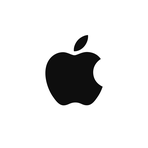Apple’s NFC Revolution: A New Era for Contactless Payments
August 16, 2024, 4:41 am
Apple is unlocking a new frontier in mobile payments. With the upcoming release of iOS 18.1, developers will gain access to the iPhone's NFC chip and Secure Element. This is a game-changer. It opens the door for third-party apps to facilitate contactless transactions. Imagine a world where your favorite app can handle payments, keys, and IDs all in one place.
This feature will roll out in Australia, Brazil, Canada, Japan, New Zealand, the U.K., and the U.S. It’s a strategic move that reflects Apple’s response to regulatory pressures and market demands. The landscape of mobile payments is shifting.
Previously, the NFC chip was a fortress, guarded by Apple Pay and Apple Wallet. Now, developers can create apps that serve as default contactless payment methods. Users can choose their preferred app for transactions. This flexibility is a breath of fresh air.
The potential applications are vast. Developers can integrate contactless payments for retail, virtual car keys, corporate badges, loyalty cards, and even event tickets. The future also hints at government IDs being supported. This is not just about payments; it’s about convenience and integration.
However, there’s a catch. Developers must enter into a commercial agreement with Apple. They need to request access to the NFC and Secure Element APIs, and there’s a fee involved. The exact structure of these fees remains unclear. Will it be a one-time payment or a per-transaction fee? This uncertainty looms over the developers eager to dive in.
Apple’s Secure Element is the backbone of this system. It’s a certified chip that safeguards sensitive information. The combination of biometric authentication and Apple servers enhances security. This trifecta ensures that transactions remain secure, even as the ecosystem expands.
The announcement comes on the heels of regulatory scrutiny. The European Union’s Digital Markets Act has pushed Apple to open its NFC capabilities. In Australia, the Commonwealth Bank has called for fair access to NFC technology. This pressure is reshaping Apple’s approach.
For users, the benefits are clear. Imagine having your gym membership, digital house keys, and work passes all in one app. The convenience is undeniable. It’s a step toward a more integrated digital life.
But there are challenges ahead. Developers must navigate the commercial agreements and fees. There’s also the question of how this will impact small businesses. Will they be able to thrive in this new ecosystem, or will Apple’s cut stifle innovation?
The excitement is palpable. Companies like Tyro are already gearing up to leverage this new capability. They envision a future where contactless payments are seamless and ubiquitous. The integration of car keys into this system is particularly intriguing. Automakers will need to adapt. Tesla, for instance, currently uses Bluetooth for its keyless entry. The shift to NFC could streamline the user experience.
Yet, the rollout will require collaboration between developers and manufacturers. Automakers must create the necessary functionality. This is where the rubber meets the road.
The implications extend beyond payments. The NFC chip can facilitate a range of services. From hotel keys to loyalty programs, the possibilities are endless. This versatility is a significant selling point for developers.
However, the excitement must be tempered with caution. The commercial agreements will dictate the viability of many apps. Developers are hopeful but wary. They want to innovate without being hampered by fees.
Apple’s move is a response to a changing landscape. The company has long been criticized for its tight grip on the NFC ecosystem. Now, it’s loosening the reins. This could lead to a more vibrant marketplace.
As the rollout approaches, developers are eager to explore the new opportunities. They are ready to create apps that enhance everyday life. The potential for innovation is immense.
In conclusion, Apple’s decision to open up its NFC chip is a watershed moment. It signals a shift toward a more inclusive mobile payment landscape. Developers will have the tools to create a variety of applications. Users will benefit from increased choice and convenience.
The future is bright for contactless payments. As we stand on the brink of this new era, one thing is clear: the landscape of mobile transactions will never be the same. Apple is not just opening doors; it’s paving the way for a revolution. The world is watching. The stage is set. Let the innovation begin.
This feature will roll out in Australia, Brazil, Canada, Japan, New Zealand, the U.K., and the U.S. It’s a strategic move that reflects Apple’s response to regulatory pressures and market demands. The landscape of mobile payments is shifting.
Previously, the NFC chip was a fortress, guarded by Apple Pay and Apple Wallet. Now, developers can create apps that serve as default contactless payment methods. Users can choose their preferred app for transactions. This flexibility is a breath of fresh air.
The potential applications are vast. Developers can integrate contactless payments for retail, virtual car keys, corporate badges, loyalty cards, and even event tickets. The future also hints at government IDs being supported. This is not just about payments; it’s about convenience and integration.
However, there’s a catch. Developers must enter into a commercial agreement with Apple. They need to request access to the NFC and Secure Element APIs, and there’s a fee involved. The exact structure of these fees remains unclear. Will it be a one-time payment or a per-transaction fee? This uncertainty looms over the developers eager to dive in.
Apple’s Secure Element is the backbone of this system. It’s a certified chip that safeguards sensitive information. The combination of biometric authentication and Apple servers enhances security. This trifecta ensures that transactions remain secure, even as the ecosystem expands.
The announcement comes on the heels of regulatory scrutiny. The European Union’s Digital Markets Act has pushed Apple to open its NFC capabilities. In Australia, the Commonwealth Bank has called for fair access to NFC technology. This pressure is reshaping Apple’s approach.
For users, the benefits are clear. Imagine having your gym membership, digital house keys, and work passes all in one app. The convenience is undeniable. It’s a step toward a more integrated digital life.
But there are challenges ahead. Developers must navigate the commercial agreements and fees. There’s also the question of how this will impact small businesses. Will they be able to thrive in this new ecosystem, or will Apple’s cut stifle innovation?
The excitement is palpable. Companies like Tyro are already gearing up to leverage this new capability. They envision a future where contactless payments are seamless and ubiquitous. The integration of car keys into this system is particularly intriguing. Automakers will need to adapt. Tesla, for instance, currently uses Bluetooth for its keyless entry. The shift to NFC could streamline the user experience.
Yet, the rollout will require collaboration between developers and manufacturers. Automakers must create the necessary functionality. This is where the rubber meets the road.
The implications extend beyond payments. The NFC chip can facilitate a range of services. From hotel keys to loyalty programs, the possibilities are endless. This versatility is a significant selling point for developers.
However, the excitement must be tempered with caution. The commercial agreements will dictate the viability of many apps. Developers are hopeful but wary. They want to innovate without being hampered by fees.
Apple’s move is a response to a changing landscape. The company has long been criticized for its tight grip on the NFC ecosystem. Now, it’s loosening the reins. This could lead to a more vibrant marketplace.
As the rollout approaches, developers are eager to explore the new opportunities. They are ready to create apps that enhance everyday life. The potential for innovation is immense.
In conclusion, Apple’s decision to open up its NFC chip is a watershed moment. It signals a shift toward a more inclusive mobile payment landscape. Developers will have the tools to create a variety of applications. Users will benefit from increased choice and convenience.
The future is bright for contactless payments. As we stand on the brink of this new era, one thing is clear: the landscape of mobile transactions will never be the same. Apple is not just opening doors; it’s paving the way for a revolution. The world is watching. The stage is set. Let the innovation begin.

